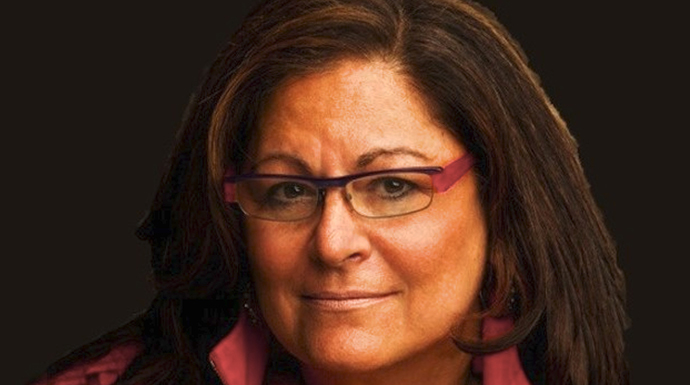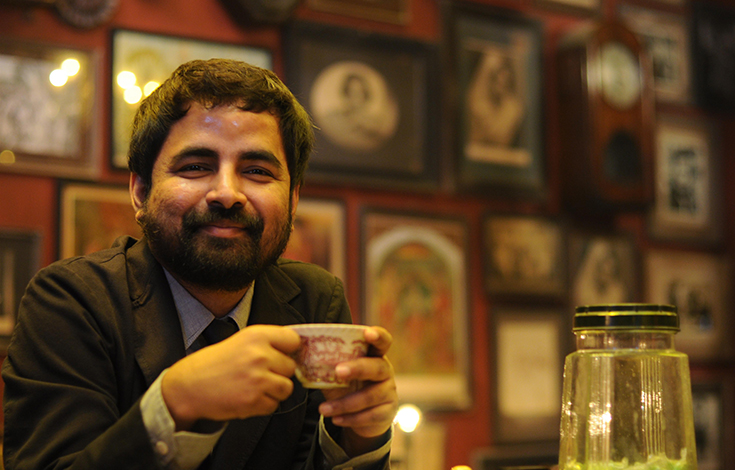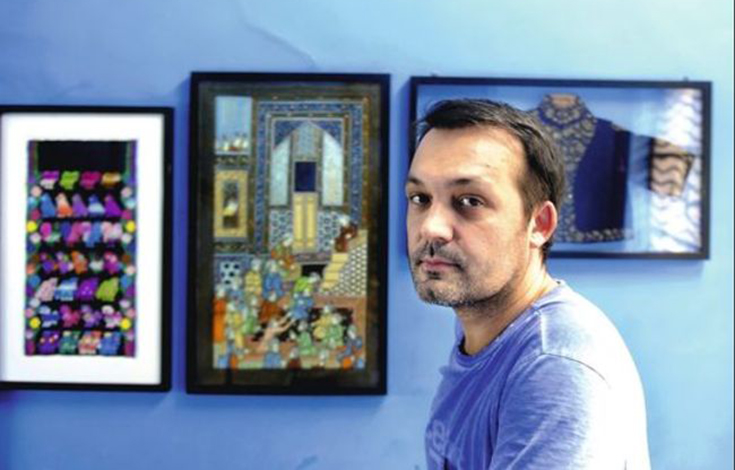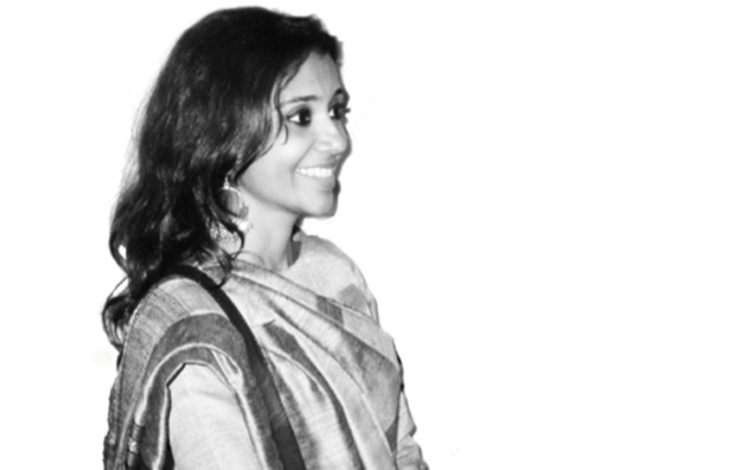Edited excerpts:
You’ve had a long-term association with fashion and India through Lakme and IMG. It appears very personal and we see you championing Indian design so often, including right now (wearing a Chikan kurta and kundan necklace) . What is it about Indian fashion that makes you such a believer?
It’s really about the talent and what speaks to you, whether it’s Indian fashion or American fashion. I’ve been a fan of a lot of the talent and a lot of the Indian designers since my first trip, almost 14 years ago. There is uniqueness, you don’t see the same stuff coming and going. I like owning things that not everyone has and there is a respect for colours, craft, textiles and individuality.
While you do need good editors to help designers to build stronger collections, for the most part there is an incredible energy to the clothing in India.
Do you think they have a global relevance?
I think many of them are and can be globally relevant, but I have yet to find the designers who want to “own” that business and do the necessary work. They “talk the talk but don’t walk the walk”.
Why do you think that is?
I don’t think there is enough training of people to become business partners, bankers or VC’s, to finance their businesses and to nurture their business the way they need to grow. Many are small enterprises, there is no standardized code for the industry; from sizing to fabric identification or instructions. Of course, there are some people who do it really well, such as Sabyasachi, Tarun, the big guys… they do what they do and have a real business in addition to a very strong bridal business; they can do a couple of weddings a year and it makes enough money for them to lead really nice lives and support a lot of people. I don’t think that they need the headache of worrying about a shipment to Neiman Marcus or returns from Bergdorf Goodman.
But that’s a handful, the few big designers. What about the smaller ones? Take Kallol for example, you’ve visibly and vocally given your support for him, one would think that would be something to open doors, yet he still struggles commercially.
I have not seen any interest on his part or his team saying, “We want to sell these clothes around the world, and we want to build an international business”. It doesn’t seem to be in their DNA but Kallol is still doing fabulous clothes with lots of potential, and I love wearing his designs.
At what point do you give up?
It’s not about me giving up; I am not invested in it. I think there is a lot of missed opportunity for the industry. You can’t succeed in this business unless you really want to, it’s a killer business and you have to work your butt off. So I am not trying to force someone to do something they don’t want to do. You have to come here if the US is your dream market. You have to be in America, spend time here, understand it and see what’s out there… go in the stores and see where your clothing would be hanging and figure all that out. You have to have salespeople and a showroom representative. You need to meet all the players, become friends and be here to do that kind of business.
At the end of the day it’s about the people and relationships as much as the clothes. You have to really want to do it.
You’re speaking about wanting to make it in one way – globally.
To be global, you have to think global and participate globally…
Have you ever felt that there was a moment that things could have tipped in our industry? Just a few years back, India and China were spoken in the same sentence…
I don’t know if it’s a moment to come or was years ago. There is still the India/China dialogue and it’s clear that China can whip India’s ass in growth, cleaning up the streets, building roads and building stronger buildings that don’t crumble. India is a place that’s really frustrating. In New York there are neighbourhoods that used to be dirty and unsafe and the communities with city and private funding created business improvement districts and they together shared in the responsibility of hiring people and cleaning the streets and securing the neighbourhoods. You walk around India and think, if only someone would organize one neighbourhood at a time, clean up all the garbage. How amazing would that be? And I find that really frustrating because there is so much beauty in India and so many people with so much taste and money, but everyone in India’s big cities seem to not mind what they see. To a foreigner like me, it seems there is no government plan to clean the streets and put people to work.
That’s India. You either love it or hate it. You either get used to it and look the other way like almost everyone else does. Yes, I see tons of opportunity but each person has to seize the moment. It is a country with so much potential to be so much greater than it is.
Speaking about responsibility, who do you see carrying the most?
For the fashion industry the FDCI could and should address these issues, but I don’t believe they have stepped up to the plate in that way but I could be wrong.
I have not been closely aligned with them ever since the Lakme/Delhi divide. I know Sunil (Sethi) and we have been on committees together during the years. I think their agenda is primarily producing fashion week in Delhi. If you look at that, and then what the CFDA (American fashion governing body) is doing, it’s pretty staggering. The CFDA is creating unbelievable initiatives to nurture talent, to get the funds and provide the support emerging designers need. Their partnership with Vogue has launched the most brilliant careers in America and subsequently worldwide. That’s one of many initiatives that the CFDA has embarked on. The FDCI could be doing that… I’m not in India 365 days a year so I don’t know everything. Although in the last 2 years Vogue India did create a similar program which should be applauded.
Speaking of the Wills/Lakme divide. Isn’t that part of the problem? Ego, politics and a severance of the whole community. Everyone agrees there should be one fashion week in India.
Most people believe that.
But I think Lakme has lost a lot of footing and tried to reposition themselves, perhaps since you’ve left…
I think they were trying to listen to the designers and understand who the audience is that’s attending LFW. If you are not filling the seats with international buyers who have international timelines and guidelines for buying – whom are you doing fashion week for? If it’s for the domestic retailers then their time frames are really different.
I think there is an ego within the industry, whereby they want to be on international calendars. They have to redefine what that means. Does international mean they are coming from the UAE? Which is fine and could be very lucrative.
Are their buyers looking for clothing 6 months from now, or for deliveries in 30-60 days? They are not currently getting the business from buyers or press from editors that are sitting at shows in New York, Paris or Milan. It’s a huge investment both financially and time wise for them to go to India.
Do you think they will come?
They did, for a long time. I brought some of the best buyers and editors and retailers for almost 10 years to Lakme. The truth is they all had incredible trips here and fell in love with India but I’m not sure that any real business transpired, because the designers were just not prepared to do it. We originally had to teach them how to do a line sheet and order form… how to put a style number next to something. It’s not good enough to like fashion and have enough money to buy fabrics and make clothes. It’s a fascinatingly talented industry with a lot of opportunity, but if the designers are happy with their businesses and doing shows all over the country, and are delivering to their stores – that’s great for them.
There has been a noticeable shift from the obsession of being internationally recognized to taking pride in growing a domestic business…
That’s part of what the shift was at LFW. There is clearly enough business to be done in India and there are more and more multi-brand stores as well. However, they are competing everyday with a Zara or H&M opening up as well as the international designer boutiques. You go to the large malls and there are many high street stores and Indian consumers have to decide whom they want to wear. I have gone to enough events and been to India enough times and don’t often see the fashion editors and friends that I know from the industry wearing Indian designers. I wear more Indian designers than many of them. At the weddings and big galas however, they are wearing saris and traditional clothes which look spectacular… Otherwise they are in Dolce or Hervé Léger.
Will this be become a classic India story, requiring someone from the outside to validate our talent? Where does that leave how we are perceived globally?
I think the global community, so to speak, still sees India as a place of special treasures, adventure and exclusivity.
Every major designer in the world still goes to India to have products made, beaded or embellished and they interface with India everyday. Everyone knows it happens in India, and can be made in India from the least expensive mass market to the couture. I think India is still trying to address the global interest in the country as and more hotels are opening up, airports are being rebuilt and tourism is high. Now the country has to deal with safety and women’s issues.
Social responsibility is very much part of the global dialogue. Here, we work with the karigars, all the way up. Do you think the craft is understood and valued?
I think craft is very valued in this country and already incorporated into many collections. I think it’s important to educate people about the craft. They need to know this was made in a local village, employing many women and therefore keeping lights on in their houses. I think there is a huge opportunity to get that message out, and create more jobs.
I believe people here are really paying attention to value the craft and hard work. The disasters in Bangladesh have seen many people looking to shift production, including the desire to do more domestically in our country. I hear more about ‘Made in NY’ and ‘Made in America’ becoming major initiatives. I’m on the board of a company that built a “state of the art” factory and facility in Haiti. They want to get some of the work that is being done in India, Bangladesh and China. Haiti is closer to America, and it too is a country which desperately needs the business and the jobs. In this particular factory the workers are being paid well, the children taken care of, they all have healthcare. It’s a compelling case and competitor for India to consider.
_________________
Fern Mallis is the President of Fern Mallis LLC.





Love the interview. Fern is amazing
A real honest assessment of the Indian fashion scene and informative, educational and eye opening interview- India certainly has talent and if only it was directed to benefit a larger purpose, it would make gigantic strides and become a global brand,
RK